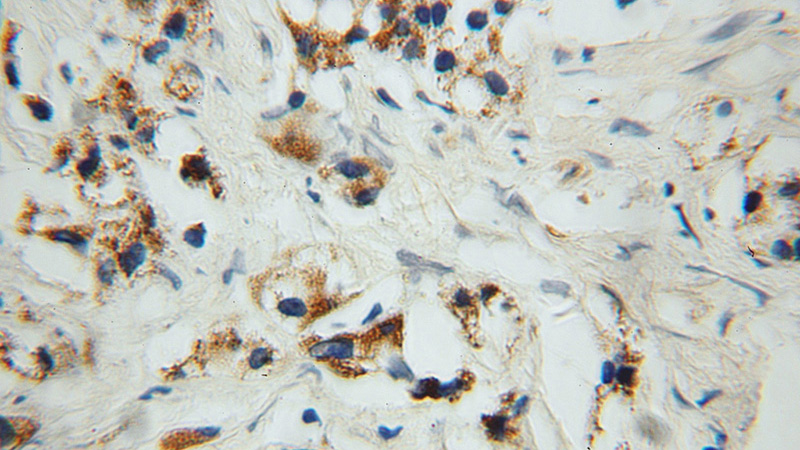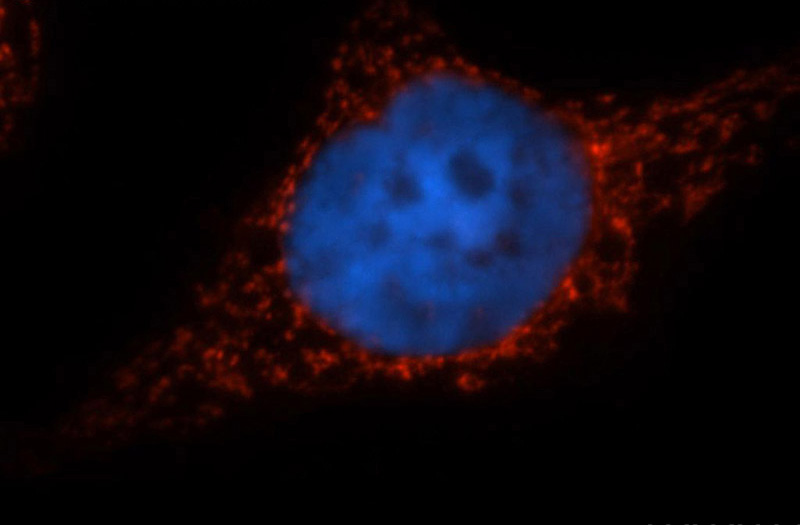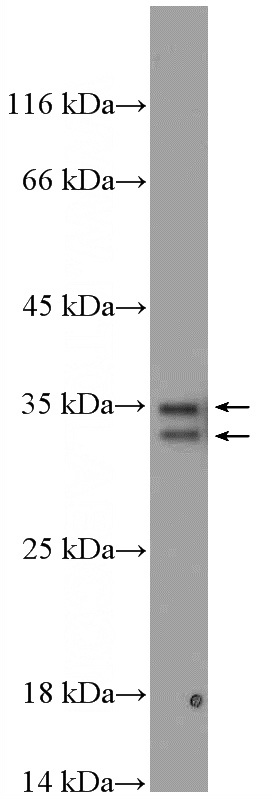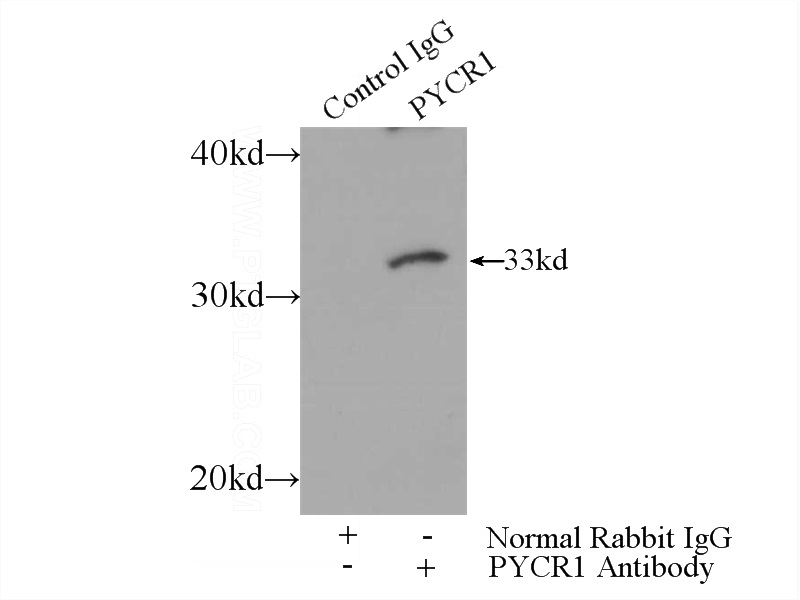-
Product Name
PYCR1 antibody
- Documents
-
Description
PYCR1 Rabbit Polyclonal antibody. Positive IP detected in mouse brain tissue. Positive WB detected in HT-1080 cells, human brain tissue, mouse brain tissue, mouse embryo tissue, NIH/3T3 cells. Positive IHC detected in human prostate cancer tissue. Positive IF detected in MCF-7 cells. Observed molecular weight by Western-blot: 33 kDa, 35 kDa
-
Tested applications
ELISA, IHC, IF, IP, WB
-
Species reactivity
Human,Mouse,Rat,Zebrafish; other species not tested.
-
Alternative names
P5C antibody; P5C reductase 1 antibody; P5CR antibody; P5CR 1 antibody; PIG45 antibody; PP222 antibody; PYCR antibody; PYCR1 antibody
-
Isotype
Rabbit IgG
-
Preparation
This antibody was obtained by immunization of PYCR1 recombinant protein (Accession Number: BC022244). Purification method: Antigen affinity purified.
-
Clonality
Polyclonal
-
Formulation
PBS with 0.02% sodium azide and 50% glycerol pH 7.3.
-
Storage instructions
Store at -20℃. DO NOT ALIQUOT
-
Applications
Recommended Dilution:
WB: 1:500-1:5000
IP: 1:200-1:2000
IHC: 1:20-1:200
IF: 1:20-1:200
-
Validations

Immunohistochemical of paraffin-embedded human prostate cancer using Catalog No:114352(PYCR1 antibody) at dilution of 1:100 (under 10x lens)

Immunofluorescent analysis of MCF-7 cells, using PYCR1 antibody Catalog No:114352 at 1:50 dilution and Rhodamine-labeled goat anti-rabbit IgG (red). Blue pseudocolor = DAPI (fluorescent DNA dye).

HT-1080 cells were subjected to SDS PAGE followed by western blot with Catalog No:114352(PYCR1 Antibody) at dilution of 1:1000

IP Result of anti-PYCR1 (IP:Catalog No:114352, 3ug; Detection:Catalog No:114352 1:700) with mouse brain tissue lysate 4000ug.
-
Background
PYCR1,also named as P5CR1, belongs to the pyrroline-5-carboxylate reductase family. It is a housekeeping enzyme that catalyzes the last step in proline biosynthesis. PYCR1 can utilize both NAD and NADP, but has higher affinity for NAD. It is involved in the cellular response to oxidative stress. Mutation in PYCR1 will cause ARCL type II(ARCL2B ). Some mutation will cause DeBarsy syndrome (DBS) which is characterized by progeroid features, ophthalmological abnormalities, intrauterine growth retardation, and cutis laxa. The MW of PYCR1 is about 33-35 kDa. PYCR1 has 3 isoforms produced by alternative splicing.
-
References
- Liu W, Hancock CN, Fischer JW, Harman M, Phang JM. Proline biosynthesis augments tumor cell growth and aerobic glycolysis: involvement of pyridine nucleotides. Scientific reports. 5:17206. 2015.
- Loayza-Puch F, Rooijers K, Buil LC. Tumour-specific proline vulnerability uncovered by differential ribosome codon reading. Nature. 530(7591):490-4. 2016.
- Reversade B, Escande-Beillard N, Dimopoulou A. Mutations in PYCR1 cause cutis laxa with progeroid features. Nature genetics. 41(9):1016-21. 2009.
- Lin DS, Yeung CY, Liu HL. A novel mutation in PYCR1 causes an autosomal recessive cutis laxa with premature aging features in a family. American journal of medical genetics. Part A. 155A(6):1285-9. 2011.
- Skidmore DL, Chitayat D, Morgan T. Further expansion of the phenotypic spectrum associated with mutations in ALDH18A1, encoding Δ¹-pyrroline-5-carboxylate synthase (P5CS). American journal of medical genetics. Part A. 155A(8):1848-56. 2011.
- Possemato R, Marks KM, Shaul YD. Functional genomics reveal that the serine synthesis pathway is essential in breast cancer. Nature. 476(7360):346-50. 2011.
- Lin DS, Chang JH, Liu HL. Compound heterozygous mutations in PYCR1 further expand the phenotypic spectrum of De Barsy syndrome. American journal of medical genetics. Part A. 155A(12):3095-9. 2011.
- Martinelli D, Häberle J, Rubio V. Understanding pyrroline-5-carboxylate synthetase deficiency: clinical, molecular, functional, and expression studies, structure-based analysis, and novel therapy with arginine. Journal of inherited metabolic disease. 35(5):761-76. 2012.
Related Products / Services
Please note: All products are "FOR RESEARCH USE ONLY AND ARE NOT INTENDED FOR DIAGNOSTIC OR THERAPEUTIC USE"
